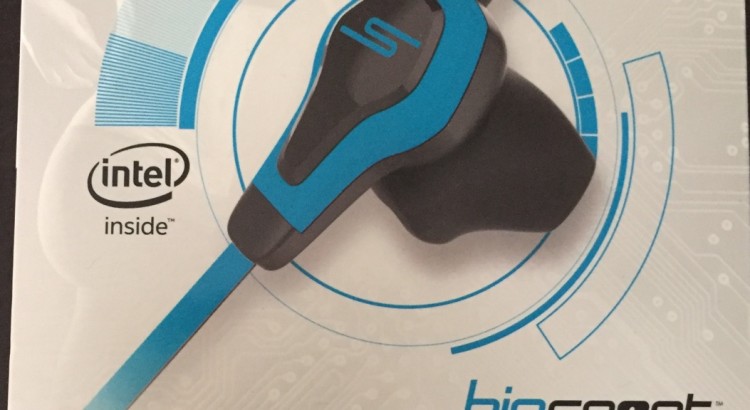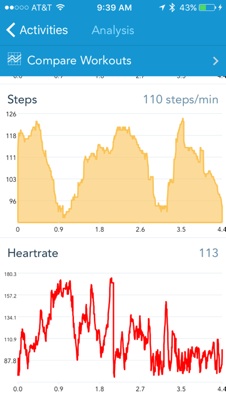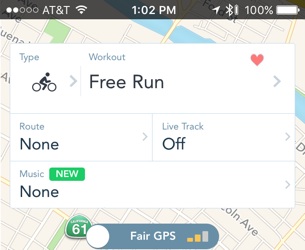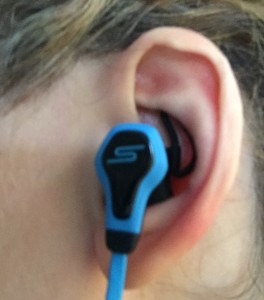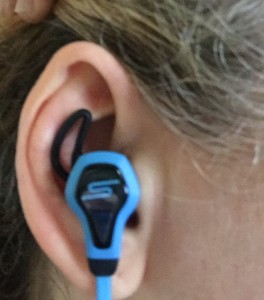As an avid exerciser always looking for a better way to track heart rate (HR) during activity, I was elated to win a pair of SMS Audio BioSport headphones from an Intel contest this summer. I tested them head to head with other heart rate trackers and earphones. Here’s my review.
Quick Recap
Overall Rating: (3.5 stars)
-Best suited for runners and walkers who exercise with their phone and wired headphones.
-Accurate heart rate
-One less device to keep track of, no charging required
-Compatible with RunKeeper
-Good sound quality
-Not compatible with other fitness apps nor standalone (misleading packaging)
-Bass quality is so-so
-Not well-suited to use when there is external sound, such as a fitness class or workout video, nor if you want to exercise without your phone
Read on for detailed performance reviews and comparisons.
Audio Performance
Overall, the BioSport audio quality is good when worn properly, though not quite as rich in bass and resonance as the two other earphone models I compared it to: Plantronics BackBeat Fit and standard Apple iPhone 6 earbuds.
I compared audio indoors and outdoors (with ambient noise), with music and podcasts, male and female voices. All headphones were set to the same relative volume for comparison, 6 notches down from Max volume on my iPhone.
| SMS Audio BioSport headphones | Plantronic BackBeat Fit headphones | Apple Iphone6 standard headphones | |
|---|---|---|---|
| Bass and resonance | |||
| Mid and high range | |||
| Style | In-ear, wired | Bluetooth, wireless; requires charging after 8 hours listening |
In-ear, wired |
| Pulse Tracking | |||
| Designed for Sport/Sweat | |||
| Volume/Call Controls on Headphones | |||
| Amazon price | $78 | $79 | ~$20 |
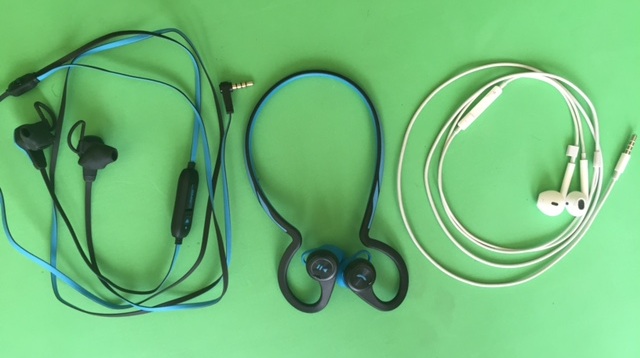
Heart Rate Performance
I did 3 activities — walking, hiking and cycling — wearing multiple devices side-by-side to compare heart rate tracking. ECG is widely considered the most accurate means of heart rate measurement, using electrical signals emitted by heart contractions. My Polar Heart Rate Monitor is ECG-accurate, so the first column below should be considered the baseline for comparison. Wrist and ear-based devices use another popular method to detect pulse: optical light sensors on the skin to track blood flow.
The BioSport headphones performed remarkably well.
| Polar FT4 Heart Rate Monitor | SMS Audio BioSport headphones + RunKeeper | Basis Peak | |
|---|---|---|---|
| Tracking location | chest strap | ear | wrist |
| 2-mile Walk (35 min) |
avg: 84 max: 106 |
avg: 83 max: 106 |
avg: 106 max: 125 |
| 15-mile Bike (67 min) |
avg: 143 max: 178 |
avg: 134 max: 179 |
avg: 118 max: 169 |
| 4.4-mile Hike (88 min) |
avg: 110 max: 175 |
avg: 113 max: 175 |
avg: 123 max: 146 |
A major factor in heart rate accuracy is the location and fit of the device.
Chest straps are worn tightly near the heart, and as such, tend to have the best possible reading accuracy though they would get uncomfortable if worn for an extended duration for this very reason. Wrist and ear trackers must be worn snugly to assure proper contact and positioning, in order for their readings to be most accurate. Because wrist trackers are designed to be worn 24/7, people generally don’t wear them very tightly which can irritate the skin and be uncomfortable, so there is a higher chance of less accurate pulse readings due to insecure fit. Ideally, one would tighten the tracker just for exercise, then loosen it after the fact.
Sport Performance
The BioSport construction feels very durable and sweat-proof, from the well-molded earbuds to the thick, well-insulated wire design.
Once I got the hang of installing the BioSport earphones properly, I found them comfortable and secure while jogging. I had a few tangles with the wire and my dog leash, which is a problem I had previously solved by using wireless bluetooth headphones.
RunKeeper Integration
During exercise you can see real-time pulse in the RunKeeper app, plus a label that shows you what heart rate zone you’re in.

Here is a sampling of the labels I saw during a varied intensity hike.
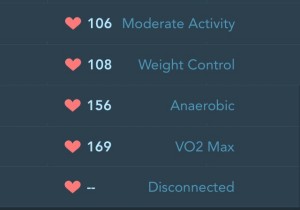
After the workout, the heart rate data is only exposed in one place, nested under the ‘Charts’ menu. RunKeeper displays a chart of heart rate over the course of the workout, plus average pulse.
The heart rate zone data that shows real-time is not summarized anywhere after the workout, as it typically would be in a zone-based heart rate monitor, but this may not matter to you. You can manually scan the chart for max heart rate as well – it is not extracted for you.
Gotchas
As with all specialty products, there is a learning curve with the BioSport headphones. Ignoring the brief user manual may mislead you into thinking this product does not work. But it does when operated properly!
- You must manually enable heart rate tracking via a switch on the cord.
- You must manually disable heart rate tracking to record video or answer a phone call, to free up the microphone.
- Inserting the earphones correctly takes practice, and if you don’t do it right, heart rate is very inaccurate, audio quality muffled, and the earbuds fall out when you jog. It’s not difficult once you understand the technique. It adds 15-30 extra seconds to your prep time.
- Biosport design is not ideal for:
- activities that require listening (like workout videos and classes)
- exercise where your phone isn’t easily accessible (such as biking)
- There are no controls on the cord other than enable/disable heart rate tracking. You can’t answer a call, adjust audio volume or skip a track without physically using a phone.
Pricing/Packaging
The SMS BioSport headphones are packaged beautifully, in keeping with the $149 retail price tag. Having been on the market for a year, they’re now available half price on Amazon and at other discount retailers.
With an Internet discount, the BioSport price tag is a bargain compared to the cost of buying separate sport headphones and a separate heart rate monitor (HRM) with chest strap. If your exercise style is compatible with the BioSport design, they are a good buy.
Bottom Line
- The BioSport headphones are best suited for runners and walkers who want to track pulse and who normally exercise with their phone and wired headphones.
- While not as versatile as a chest strap-based heart rate monitor (which doesn’t block ears nor have wires), these headphones are a convenient and comfortable way to track pulse with high accuracy.
In the future, I’d love to see a cordless version of the BioSport headphones with external controls so the phone can be stashed entirely away during exercise, plus support for more popular fitness apps, like Strava, MapMyFitness, and HealthKit.
References
Palladino, Valentina, “Who Has The Most Accurate Heart Rate Monitor?”, Tom’s Guide
“How Heart Rate Monitors Work & Their Benefits to Training”, Runtastic Blog
